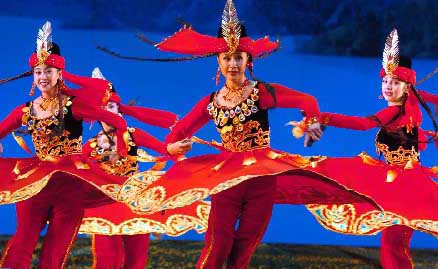
Looking in
Cognizance of Xinjiang as an “exotic” tourist destination has been on the rise in recent years. In the West, this is in large part due to a string of novels and travel narratives that explore the glory of the Silk Road of yore.
A slapdash survey of a dozen Western acquaintances who have traveled in Xinjiang reveals that all but one had read Foreign Devils on the Silk Road: The Search for the Lost Cities and Treasures of Chinese Central Asia. Published in 1980 by journalist Peter Hopkirk, the book is one in a series of six in which the author recounts the (mis) adventures of European explorers in the Central Asian region in the 19th and early 20th centuries.
Nowadays, those in the West who strive for a deeper understanding of Xinjiang can study the region as part of Chinese or Central Asian studies degree programs in many countries around the world. In the U.S., four universities – The University of Kansas, Washington University, the University of Indiana at Bloomington and Harvard University – even offer instruction in the Uygur language, a Turkic tongue closely related to Uzbek, Kazakh and Turkish.
Understandably, Chinese attraction to the “exotic appeal” of this part of their country stretches back further than recent Western interest. One of the most widely quoted historical references to Xinjiang in China today is the 16th century novel Journey to the West. Written by Wu Cheng’en, the story is loosely based on the 6th century adventures of monk Xuanzang as he traveled through Xinjiang on his way to India to seek out sacred Buddhist texts.
Scenes from Journey to the West,countless Chinese melodramas based on the book, remain vividly alive in popular Chinese imagination.
On a recent trip to Xinjiang, our reporting team was traveling east from Urumqi on route to our next destination when the minibus shuddered to a halt. “Get out!” Hollered a Chinese colleague. A confused glance out the window – no other vehicles in sight, barren desert on both sides – revealed no immediate danger.
“It’s Flaming Mountain,” the colleague responded to my blank stare, motioning to the innocuous ridge to our north.
A little research later in the day revealed Flaming Mountain to have received its name courtesy of Journey to the West. In the fictional account, the Buddhist monk protagonist, led by Sun Wukong, a monkey king, encountered a wall of flames where the mountain stands. The flames were said to be caused by the monkey king’s knocking over a kiln and causing a disturbance in the heavens. Our Chinese colleagues were fascinated to finally see this legendary mountain with their own eyes, while my foreign colleagues and I could only stand by and appreciate the immortal power of literature.

